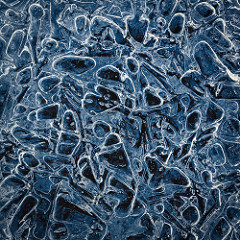 For many of our pondkeepers, October means cooler temperatures and a change in landscape. The colors of fall bring beauty to your pond, but there is more to consider as you enjoy the crisp autumn air. Last month we talked about completing your “Big Fall Cleanup.” Once that is done, you should begin making plans to protect your pond and fish over the winter.
For many of our pondkeepers, October means cooler temperatures and a change in landscape. The colors of fall bring beauty to your pond, but there is more to consider as you enjoy the crisp autumn air. Last month we talked about completing your “Big Fall Cleanup.” Once that is done, you should begin making plans to protect your pond and fish over the winter.
Caring for fish
In most parts of the United States, fish can be left in the pond during the winter, provided the depth of the pond is adequate (18 inches minimum or deeper in harsher climate zones) with little or no water circulation. Fish will gather in this deepest area of the pond, where the water temperature remains more stable, and go into a state of hibernation during the winter months. Note that some types of fish, such as fancy goldfish, bubble eyes and lion heads, are sensitive to cold weather and should be brought indoors. It’s a good idea to submerge a few pots so that your fish and other water life, such as frogs, may take shelter in the winter.
Feeding pond fish
As winter approaches, you should monitor pond water temperatures daily. As discussed last month, when the pond’s water temperature is between 39°F and 50°F, a wheat-germ-based diet is best for your pond fish. And don’t forget, when the water temperature falls below 39°F, you should stop feeding the fish altogether. Some may worry about not feeding their fish, but you can rest assured that your fish will naturally rely on stored energy reserves built up during the summer to sustain them throughout the winter months.
Don’t forget your plants
Many aquatic plants (with the exception of tropical lilies and water hyacinths) can be left in the pond through the winter. Trim back all dead foliage, and then submerge the plants in the bottom or deeper section of the pond to prevent the plants from freezing. Hardy, water garden plants will come back year after year. Consider bringing tropical lilies and water hyacinths indoors for the colder months.
Pond equipment
Use a de-icer to keep an area of the pond ice-free so pond inhabitants can breathe. De-icers help fish survive by allowing harmful gases to escape through a small ice-free opening in your pond’s frozen surface. There are energy-conserving de-icers designed specifically for ponds that are inexpensive to run. You can also melt a hole daily using a pan of warm water. Do not break the ice to make a hole, since this can harm fish and other aquatic inhabitants.
